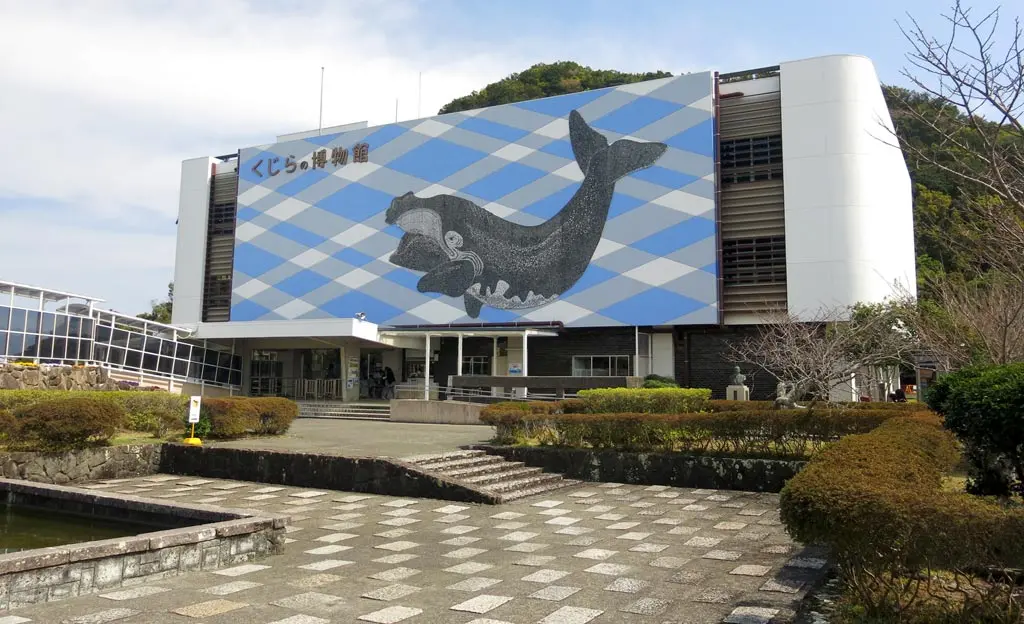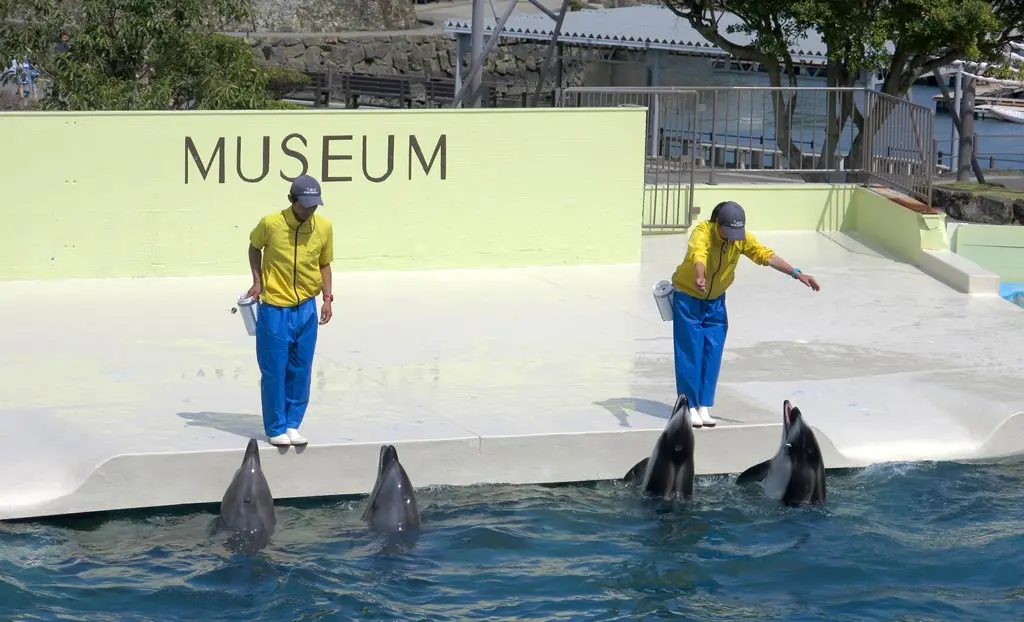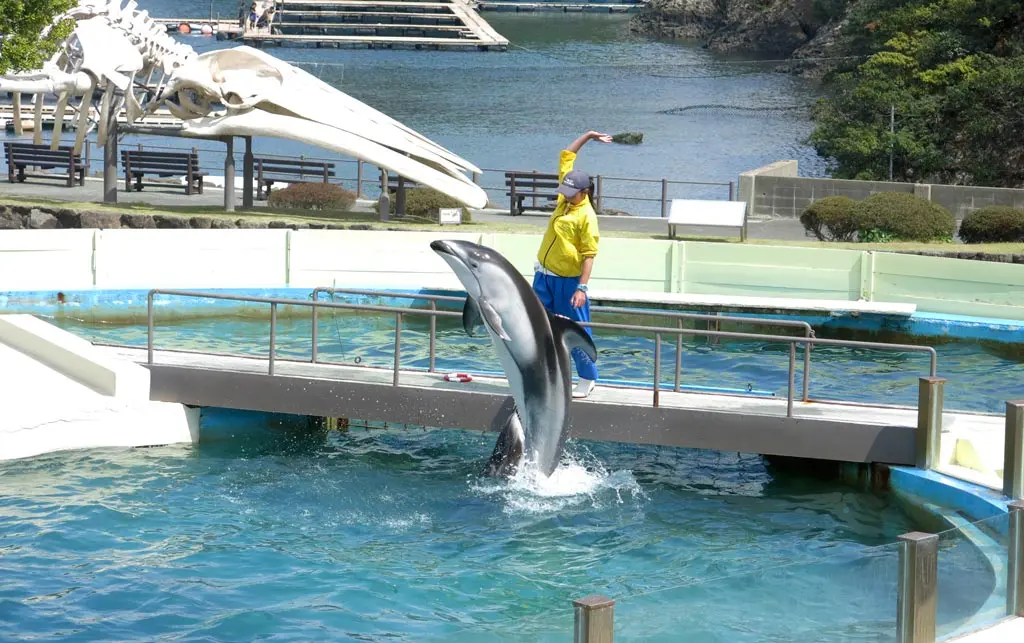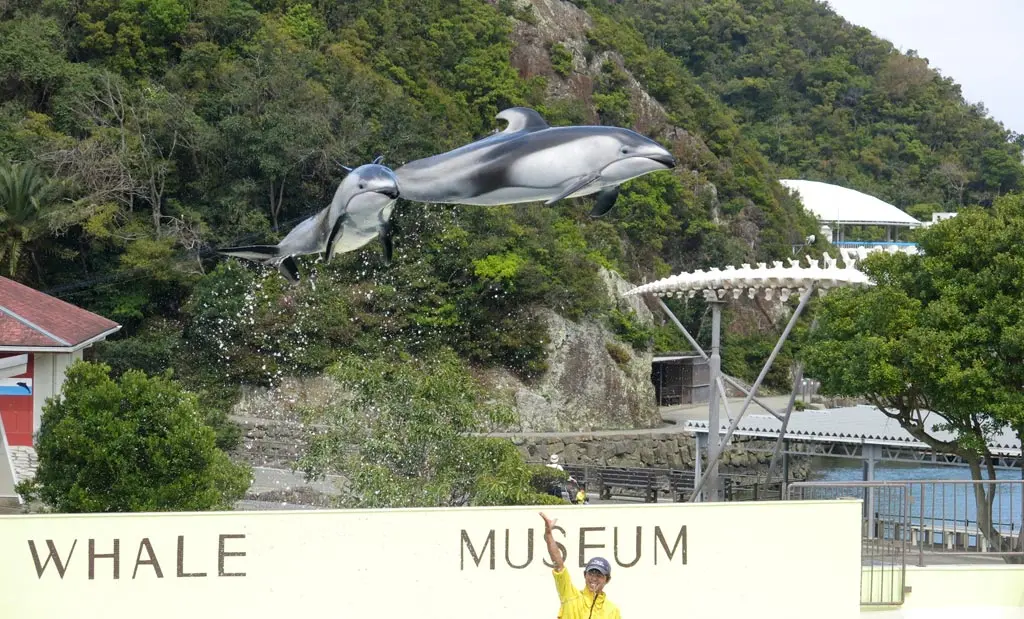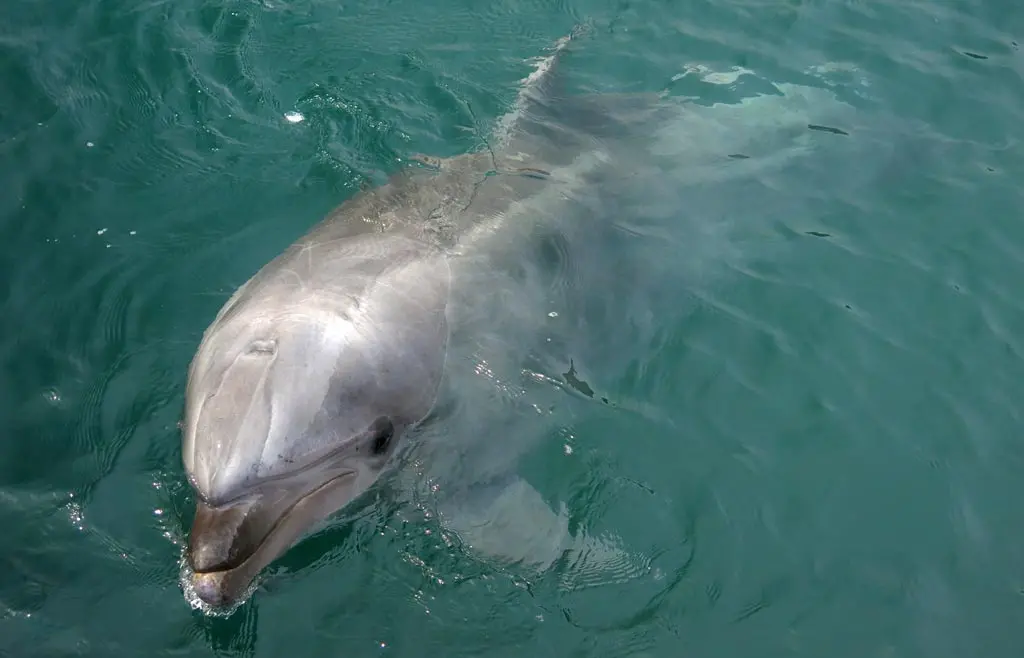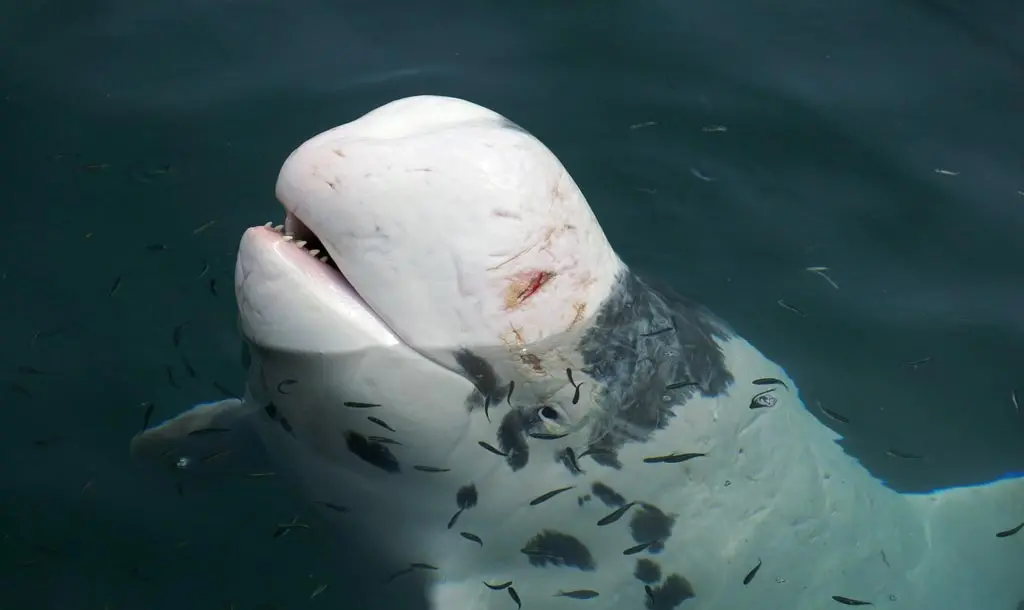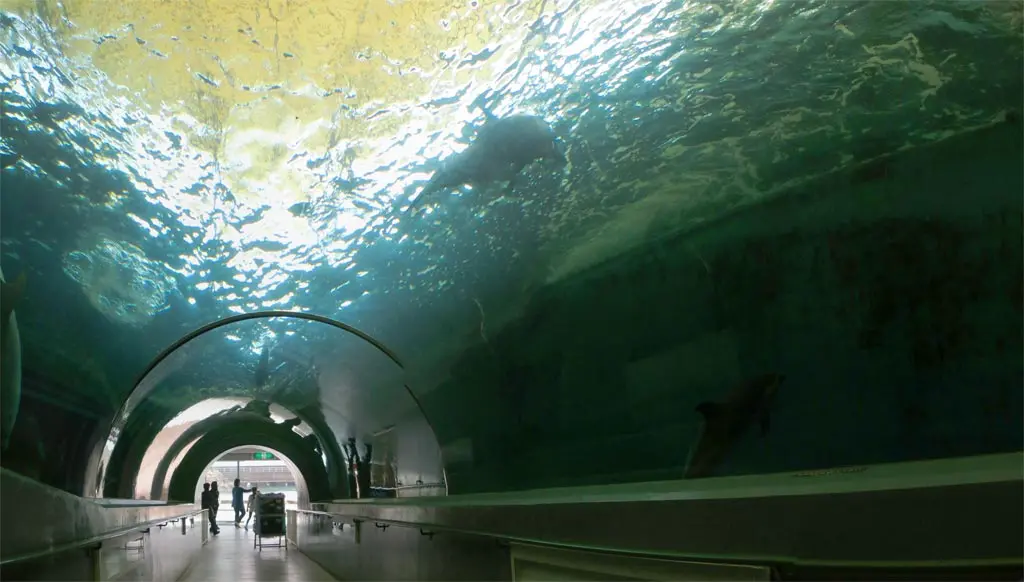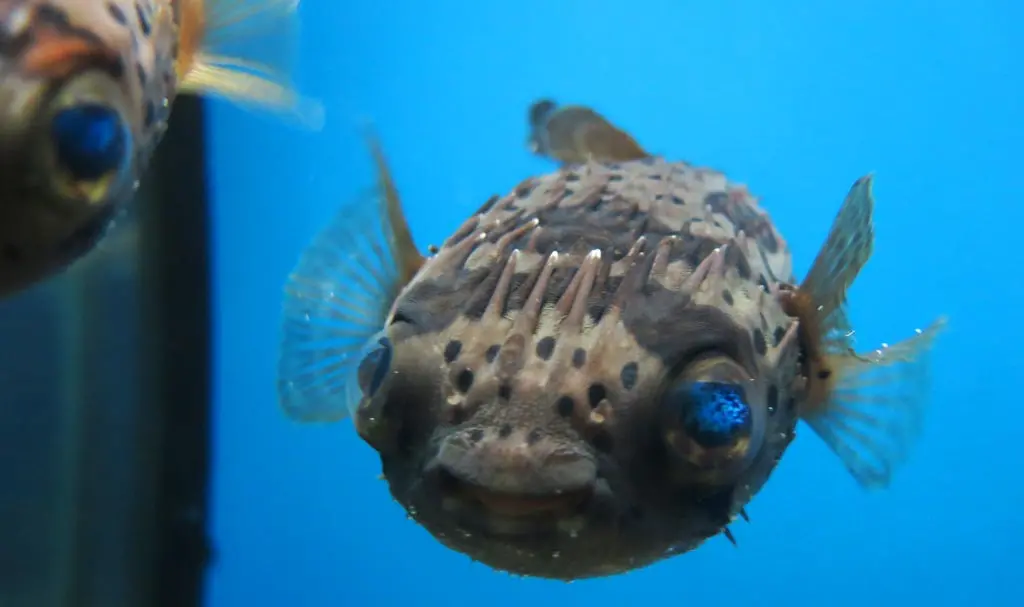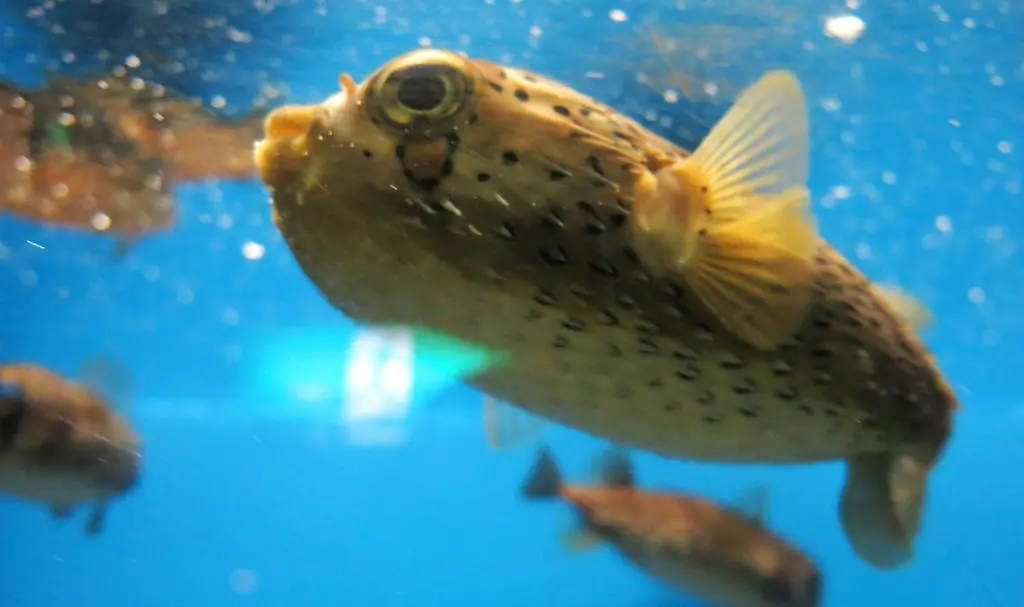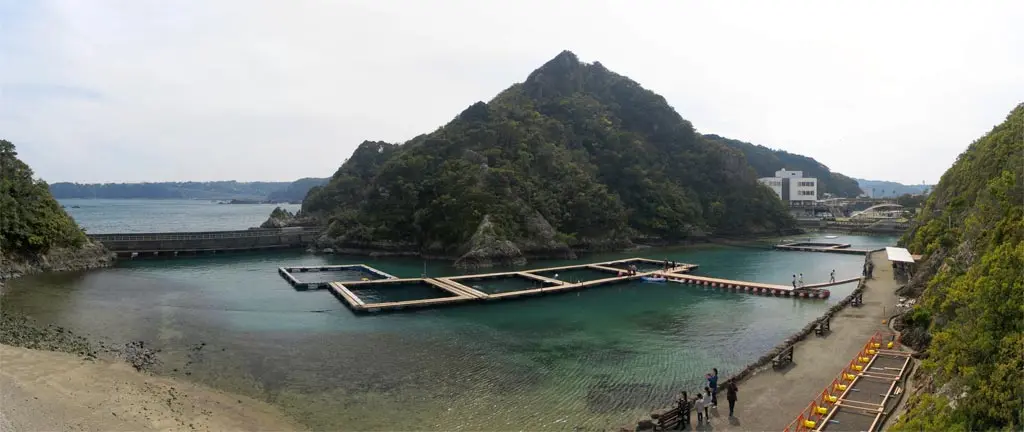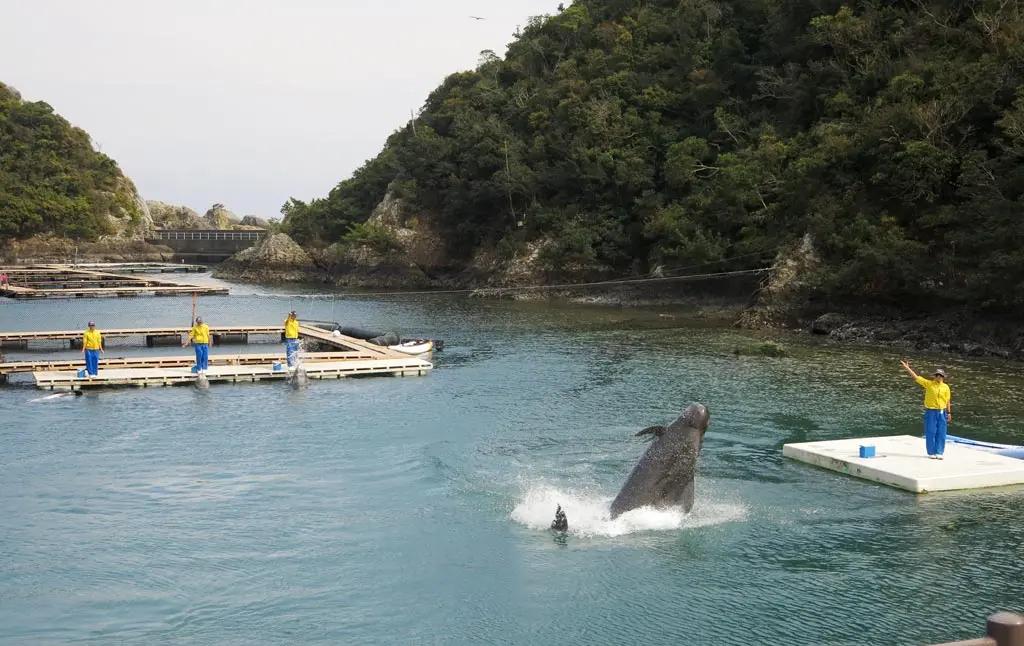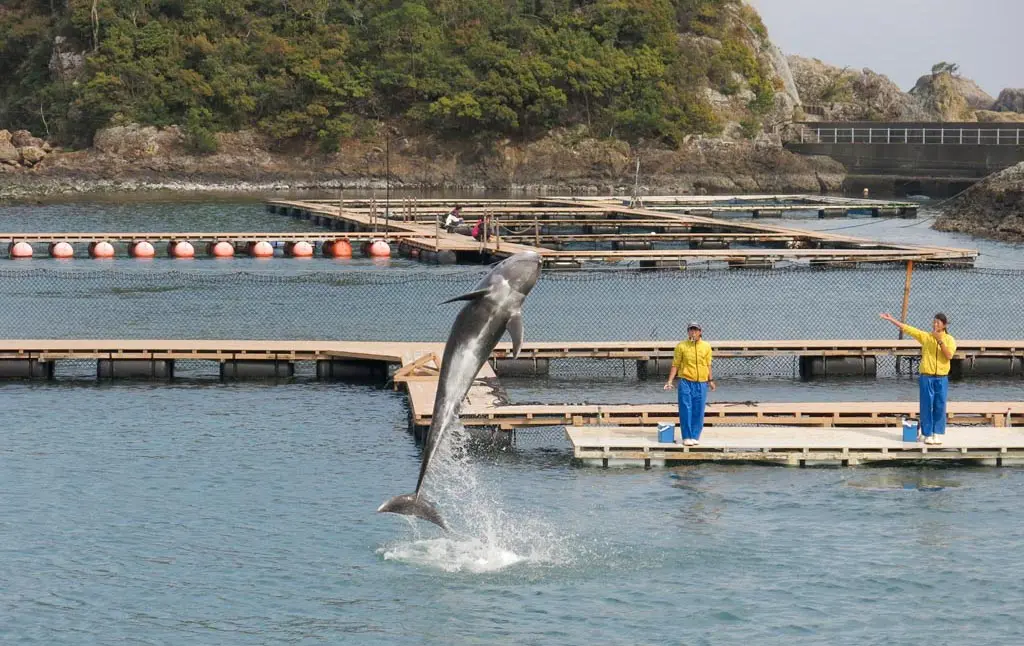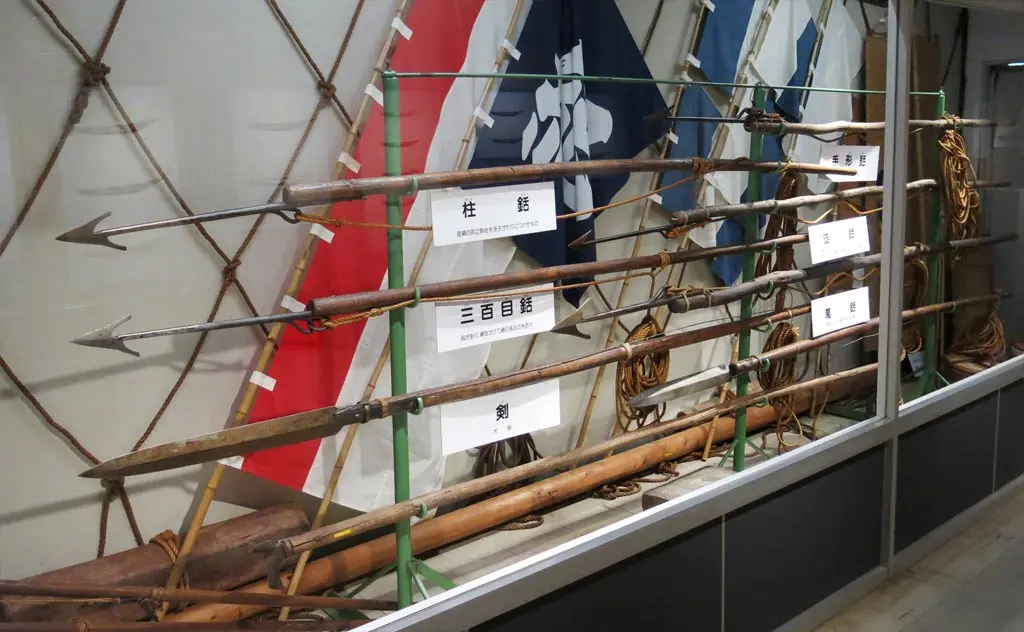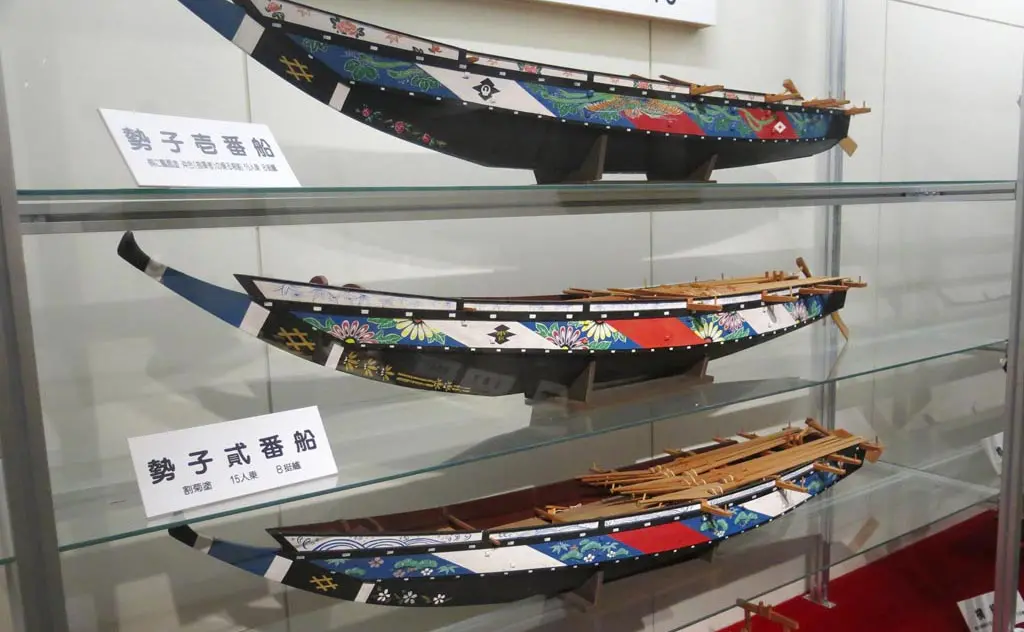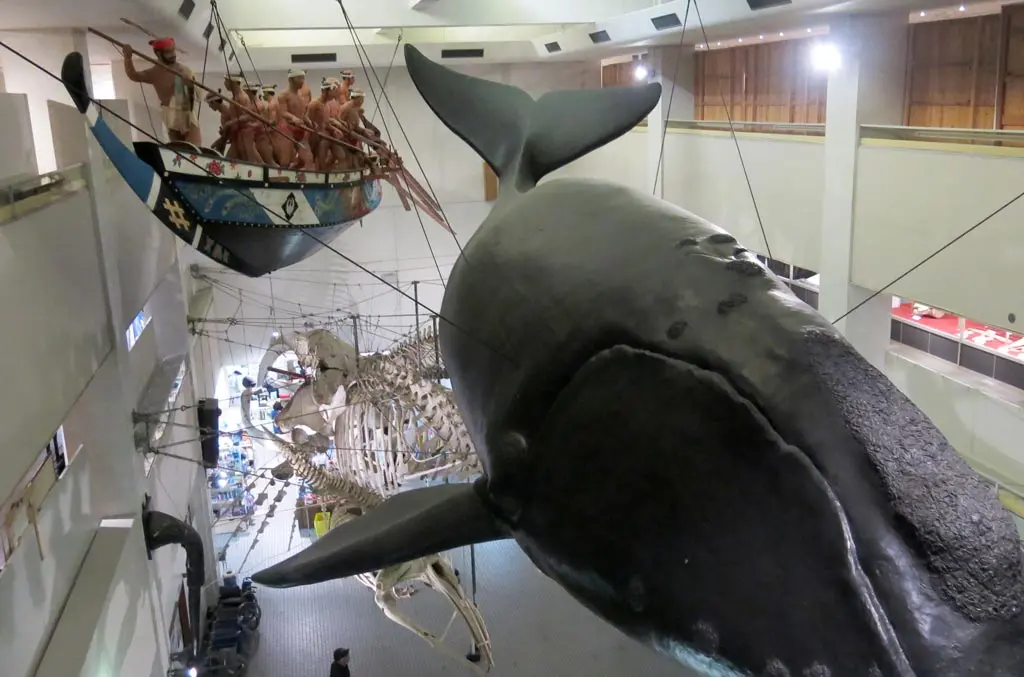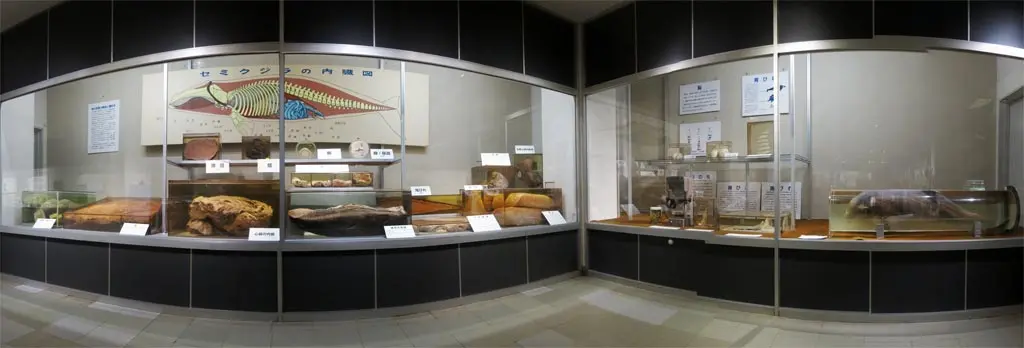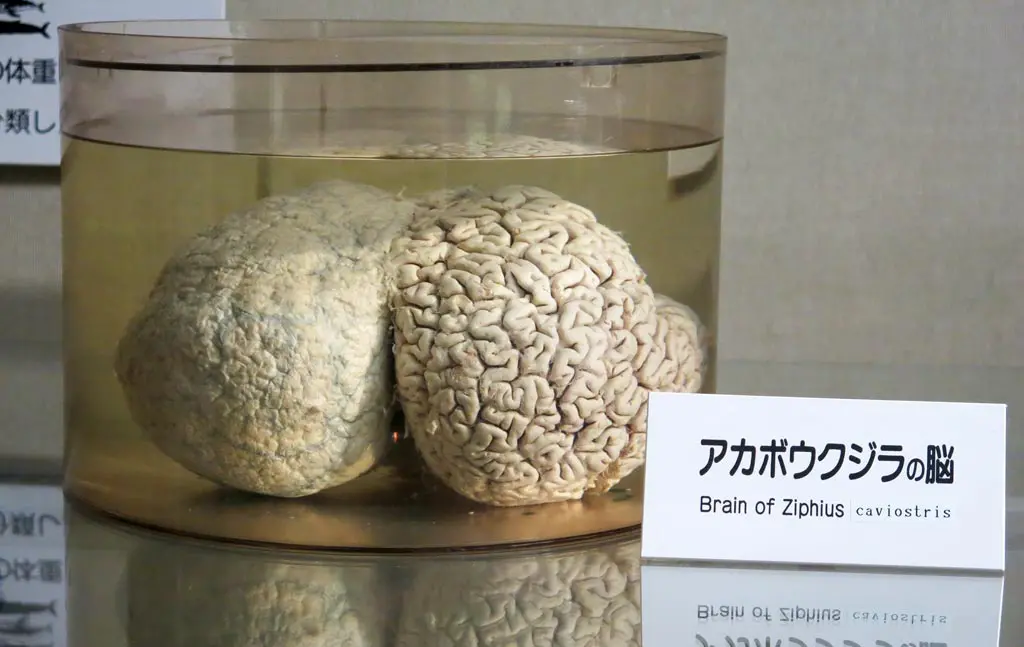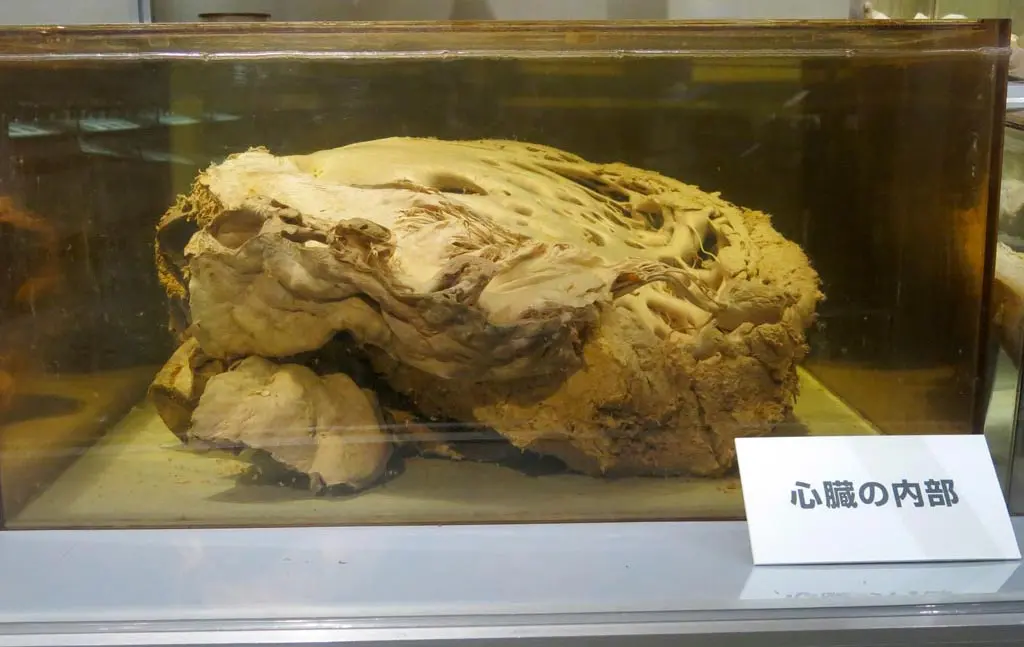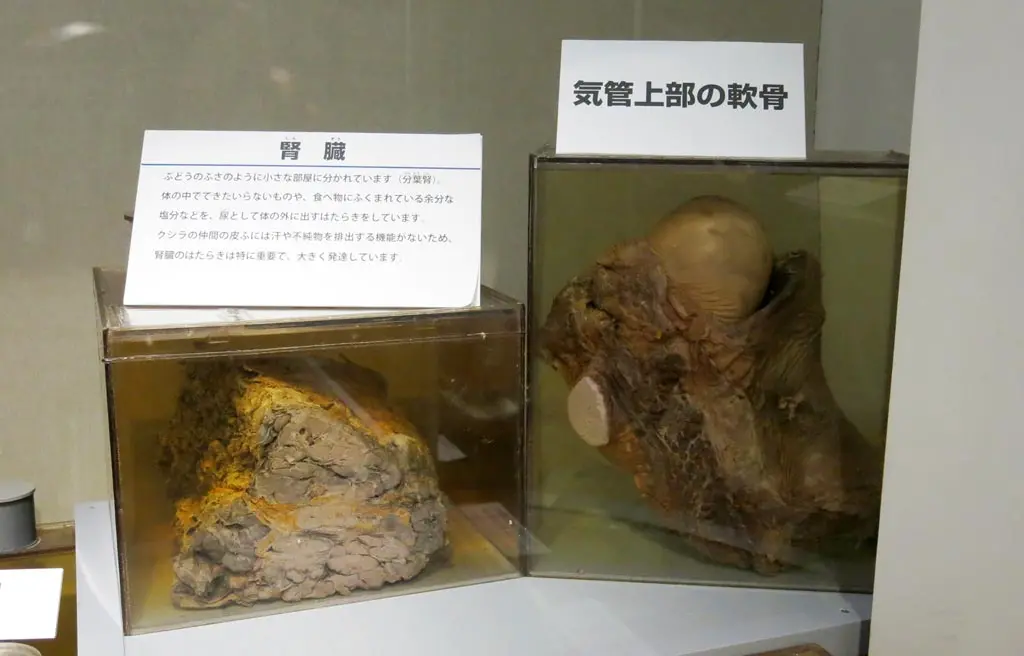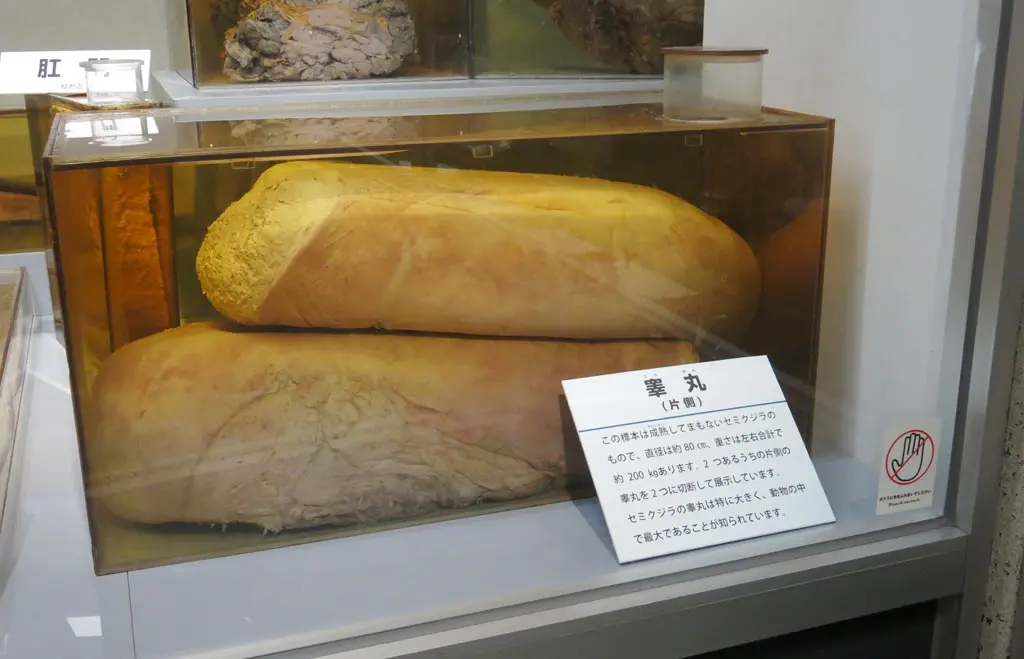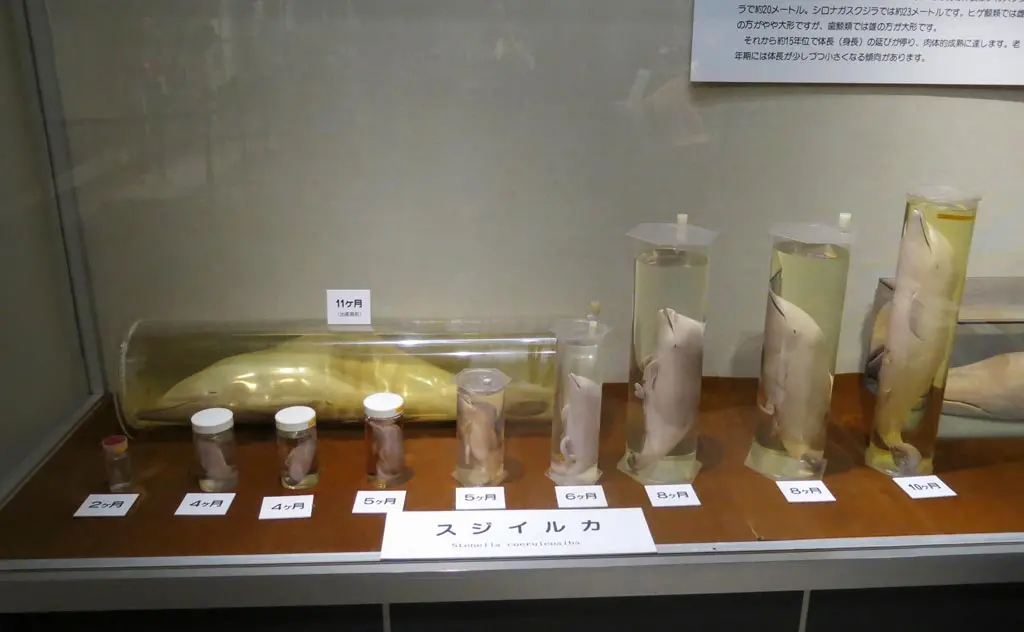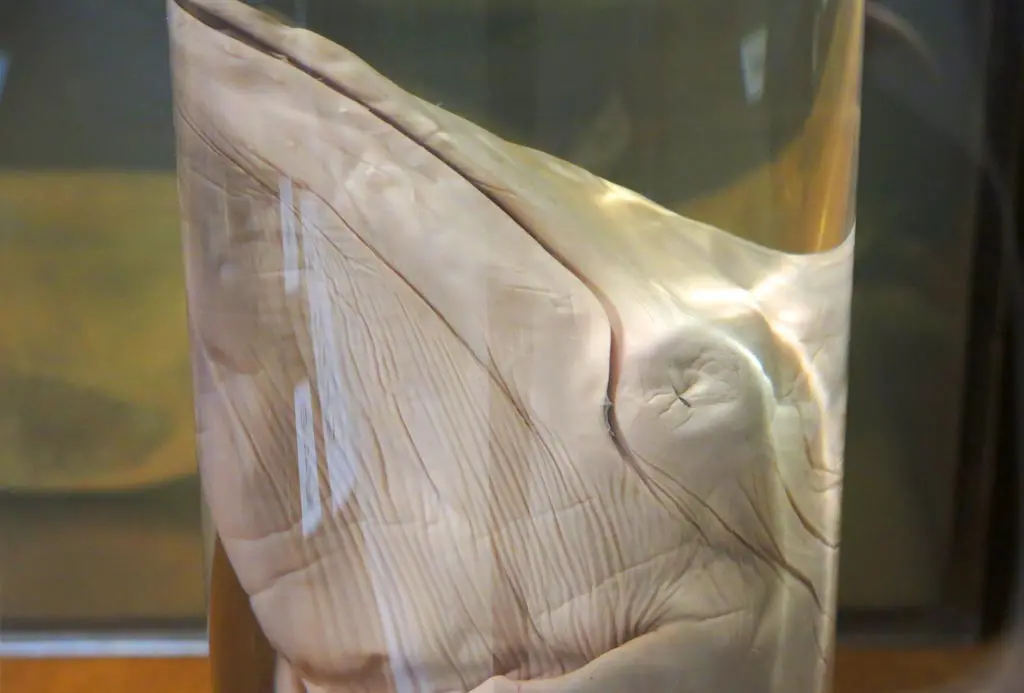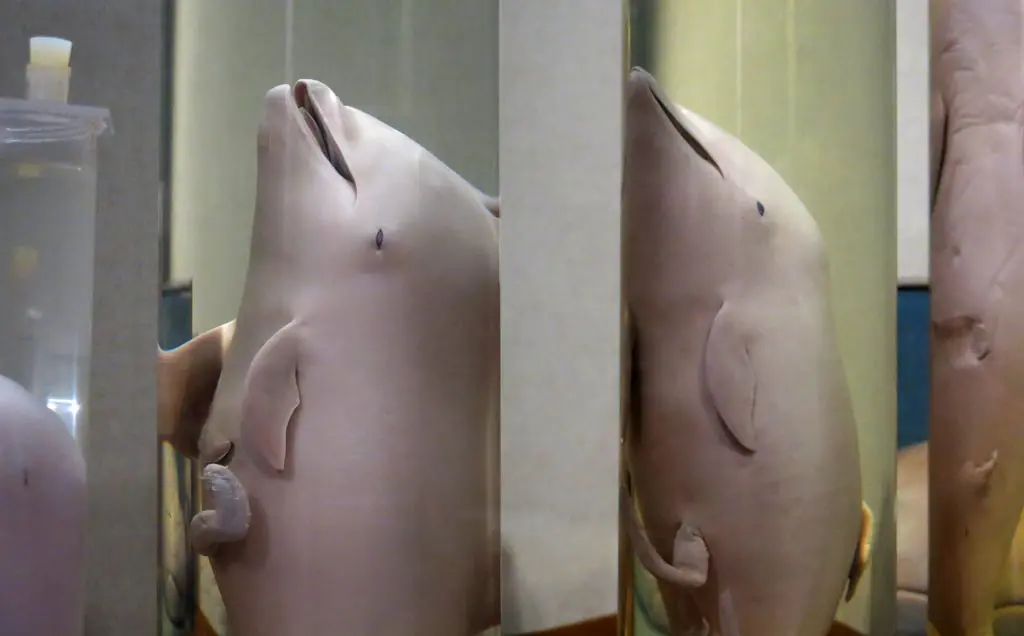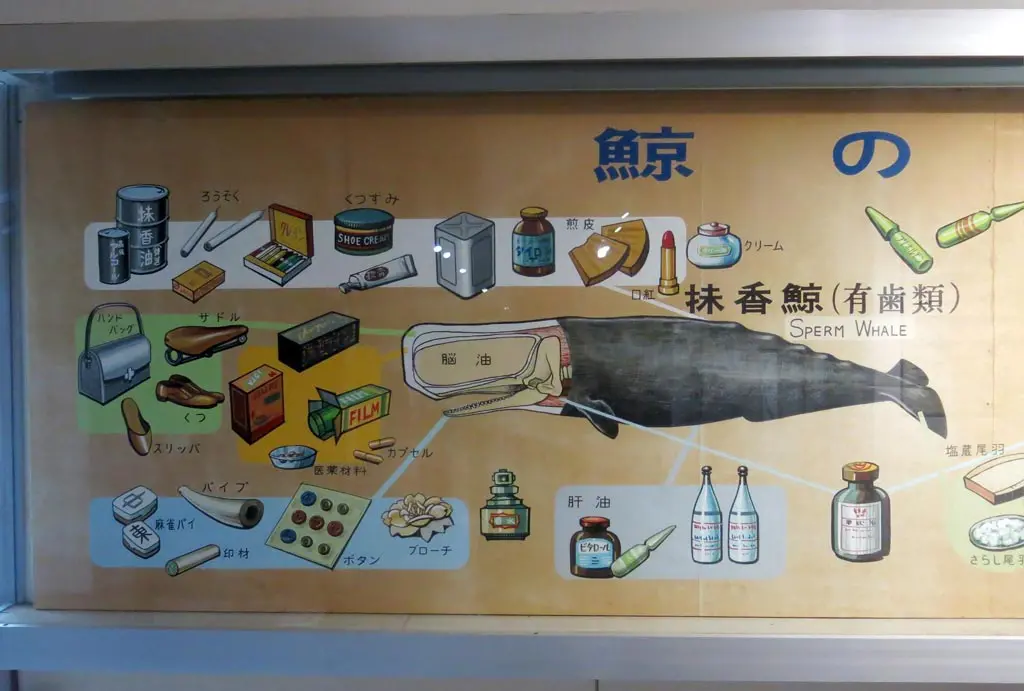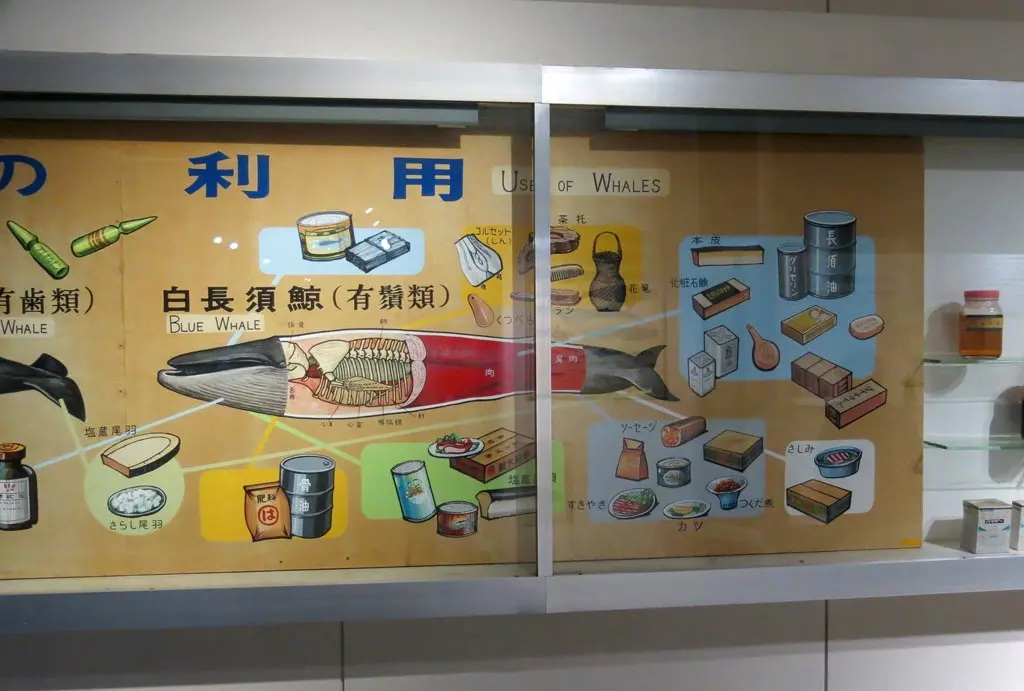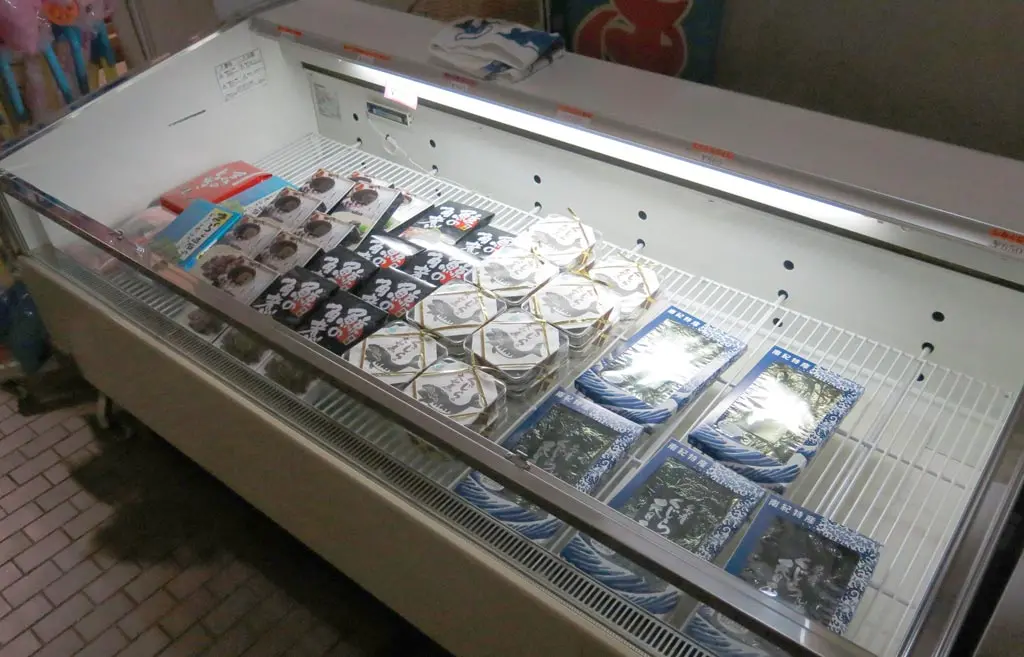The most prominent attraction in the whaling town of Taiji, Wakayama is the Whale Museum. It's located at the end of one of the peninsulas in the town.
It's a little more than just a whale museum, though. That's really only the building you see in front of you. Attached is an aquarium, which seems like the real attraction.
After going through the gates, you're presented with a dolphin training tank. I got there as the 1:15 show was about to being.
The trainers gave their commands, and the dolphins swam around, and jumped around. They did their tricks and got their small treats as rewards.
After watching The Cove all those years ago, I can't stop thinking about the well-being of these dolphins, or really any animal in captivity. The Cove made mention that dolphins communicate and hear through echo-location and sound. The subtle reverberations of their pings bouncing off walls and objects in the open water to give them a sense of location.
In a tank, they're obviously trapped and surrounded by sound. What's worse is the sound of the announcer from the speakers blaring overhead. And the crowd clapping and cheering them on. It can be sensory overload for a dolphin or a porpoise. Many captive dolphins commit suicide, or damage themselves by ramming into the sides of their tank to try and make the pain go away. At least, for ones caught in the wild.
I think there's some law enacted that states dolphins, orca, and other porpoises can no longer be caught in the wild for the porpoises of captivity because it's so damaging and harmful to them. Only sea-mammals born and raised in captivity are allowed to be kept in captivity.
This is probably directly because of their echo-location senses. Being born and raised in captivity allows them to live with the noise their entire life, and adapt from the very beginning. Though, this means they could never be released in the wild. We've basically split their species on a different evolutionary path, much like dogs and wolves.
But, they flip around and jump around, and everyone claps. I wonder what actually compels these dolphins to obey. They are just animals, but they're smarter than most. Smarter than dogs. I wonder if they have some kind of loyalty gene as well, and since we've had them in captivity long enough, those loyalty genes have been passed on to their offspring, continuing the cycle, breeding a more loyal dolphin.
At some point, this gets just as perverse as dog breeding. Though, the real perversion of this place is to come.
Passed the dolphin tanks is an enclosed bay connected to the ocean. In this bay are their larger dolphins and porpoises. Despite being in captivity, at least closure is actually natural and attached to the ocean. There's no need to chlorinate or chemically alter the water to produce their natural habitat. They're just roped inside.
Here you can walk along those floating docks in the middle of the bay, and get really close to the animals.
At the entrance to these docks, you may buy some treats to feed these dolphins, so they're all very friendly. They're all trying to court your favor and love so you'll give them something to eat. Beggers.
I was mostly paying attention to any scraps, scars, cuts, or bruises any of these dolphins and porpoises might have incurred because of captivity. This albino porpoise had an open wound.
At the end of the walkway was the Taiji Marinarium, which had some baby dolphins and other sea creatures.
It's a cylindrical structure surrounding a tank. As you enter, a tube guides you through the bottom of the tank, and you have a 360 view of the baby dolphins swimming around. It seemed like more of a holding area, or a temporary pen before they could join the rest of the dolphins in the natural pen.
The hallways surrounding the tank had several small tanks with various sea life. The first of which had a collection of fugu fish.
Only one of these fish had normal looking eyes. It looked healthy, and it vibrantly swam around in the tank. That's the fish on the right, above. All the others had eyes like the one on the left. Crystalized. Blank. Blind. Fugu fish swim around in the depths of the ocean right? They aren't surface level fish. They're used to the dark. What happens when you bring them up from the depths into constant light.
They also had some other fish, and eels, and squid. You could view the whole enclosed bay from the top, too.
I had spent enough time wandering around the rest of the area that the whale show was about to begin. It was basically the same as the dolphin show, but with the larger porpoises in the open area instead.
Trainers came out, and made the animals do tricks.
Been there, done that.
Much like the aquarium and the marinarium, the museum was also somewhat small. Only 2 floors. The museum had two main functions according to its exhibits. One showed the history of whaling in the town. The other showing the biology of dolphins and whales.
The top most floor had many items glorifying whale hunting and catching.
The town of Taiji has a heavy tradition of hunting whales. Successfully capturing and killing one of these massive creatures could easily feed the town for months. Back in the day, whales used to come quite close the coast. Hundreds of years ago, there were very few large ships patrolling the oceans, and there were all made of wood. They were no mechanical noises to ward away the creatures of the sea.
The hunters of the village, would get into smaller boats (models shown above), and extend very large nets between multiple ships. Once a whale was captured in the nets, and they could get close, the hunters repeatedly stabbed and skewered the beast with their spears. Eventually wounding it enough, to be pulled onto the beach, and killed.
Such effort must have taken almost an entire day. Even when killer whales kill a seal in the open ocean, it takes about 8 hours before they've beaten it enough for it to quit fighting back. Only once the hunters have destroyed the whales will to live, could they drag it close enough to the beach to finish the job.
Extended in the middle of the building was a 1:1 scale of the hunters preparing to attack their prey.
The area showed some of the more modern equipment used to kill whales, but it was small in comparison to their traditional hunting methods.
The middle floor focused on the biology of the sea mammals.
The first corner had several internal organs of whales. With so many whales killed every year in the village, doctors and other scientists were probably super curious about the internals. How were they different from humans? How big were their internals compared to ours? Were they missing anything? That kind of thing.
They had a brain, part of the heart, some of the kidney, a big pair of testicles, a tongue, and a few others.
They also had a lot of bones, and skeletons. They had a neat setup with a dolphin skeleton and a human skeleton next to each other. Each skeleton had regions of bones with different colors showing where we matched.
The next part of the museum displayed their collection of dolphin and whale fetuses.
I think this is a good display of the scale of whaling in Taiji. They have killed enough whales and dolphins in this town to not only have they killed several pregnant ones, but enough to collect a fetus of every month of gestation.
I mean, dolphins, whales, and other porpoises have children in the same manor we do, except they take some months longer than us before birth. They aren't giving birth all the time like a school of fish. It's about the same if you were to think of your circle of friends and acquaintances, and compare how many are currently pregnant, and at what month.
I dunno.. Given how many dolphins and whales they kill every year, I guess it wouldn't be too difficult to collect this many fetuses, huh?
This kind of thing would never fly in the US. It would create so many arguments and protests.
Here.. hunting these sea animals is a traditional way of life. It's how this town survived back in the day, and it's how they continue to survive today by selling the meat. The idea of these traditions is very important in Japan, especially in small outlying towns.
By originally collecting these fetuses, they were able to further understand the animals they killed, how they relate to us, and how life works. They mostly likely killed the mothers without realizing the pregnancy. Using the fetuses gives them work insight into biological science.
Now in a museum, we can learn about how doctor from hundreds of years ago studied and learned about these creatures. And child today can look directly at them, and instantly understand the process of life. "Authentic" materials, as it were. As I was taking photos, a 5 year old girl, and her older 8 year old brother turned the corner, saw the jars, and said, "Wow すごい!" This creates interest in science.
Further down the hallway were images of how each part of the whale is used after it's killed.
I think it's easy to complain about how disgusting and immoral it is to kill these animals. Meanwhile, the townspeople are making use of as much of the animal as they can. They honor and respect the dead this way.
Of course, now it's illegal to hunt and kill whales because places like this have ruined their numbers to the point of extinction. Which, in turns, ruins the ecology of the ocean.
I figured that was about enough dolphins and whales for one day. This museum and aquarium really follows the full circle of life. Celebrate their lives outside, and celebrates their deaths inside.
One last thing.. You can buy whale meat in the gift shop before you leave.
You've seen them swim around outside. You've pet them. You've seen their bones, their organs, and their unborn children. Now, why not buy and eat them. Complete the circle of life.
I did buy a can of their meat, though I have yet to eat it. Perhaps this weekend.
